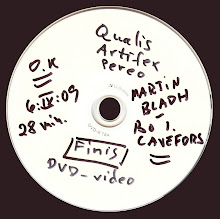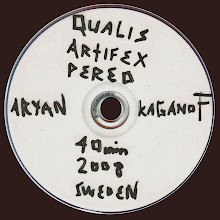''
'
'

'
'
'
"for bo cavefors, 14.12.2009"
by X
'
'
'
Appendix I : Nero Claudius - Georges Bataille - Bo I. Cavefors - Martin Bladh - Aryan Kaganof : QUALIS ARTIFEX PEREO. Appendix II : Martin Bladh - Bo I. Cavefors : QUALIS ARTIFEX PEREO - FINIS

